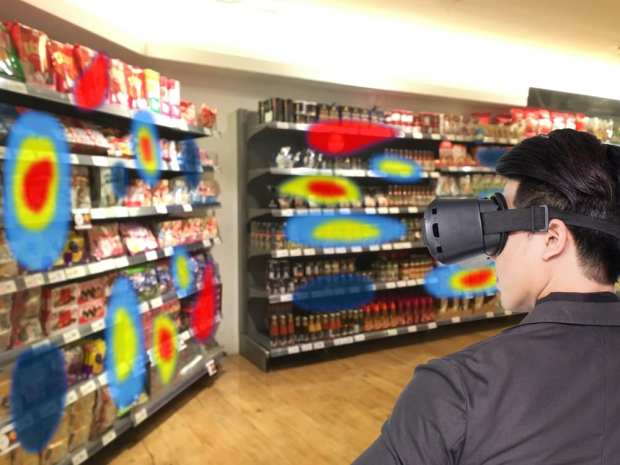New Eye-Tracking VR Tech By Qualcomm, Accenture Helps Retailers Stack Shelves Better

Two tech companies and a food brand have teamed up to develop a virtual reality (VR) headset that uses eye-tracking tech to determine the best way that retailers should stock products on shelves, according to a report by VentureBeat.
Accenture, Qualcomm and Kellogg collaborated on the venture. The companies said the technology could completely change retail by letting companies do market research for products much more efficiently and on a bigger scale.
Raffaella Camera, a leader in Accenture’s Extended Reality group, said the VR tech has Qualcomm chips and eye-tracking input from Tobii. The headset lets retailers track where the wearer looks when walking down the aisles of a virtual supermarket. The store is full-scale, and lets users move and pick up items and put them into carts.
The tech lets analyzers see exactly how long customers look at items, if they pick them up, and for how long, and why. The goal is to get data from participants who are in different geographical areas and make market research easier.
Camera said the demo has resulted in an 18 percent rise in sales while testing with Kellogg’s merchandise. It was tested for the launch of Kellogg’s new Pop Tarts Bites.
“We are packaging up an entire offering and are now talking to a number of companies about the results,” Camera said. “We are concentrating on solutions based on XR to [enable] solutions for different parts of the value chain for different parts of this industry. That is our goal for this year.”
The peripheral is a Qualcomm VR reference design headset, and it’s powered by a Qualcomm Snapdragon 845 Mobile VR Platform. It uses embedded eye-tracking and software from InContext Solutions. The eye-tracking data is analyzed by Cognitive3D.
“When trying to best assess a future product’s shelf placement, this new methodology provided optimal guidance from both a product and category perspective,” said Jenny McDaniels, senior manager of category strategy at Kellogg. “This approach provided multiple data outputs, which in turn created a holistic solution that would drive success for both the category and product.”
